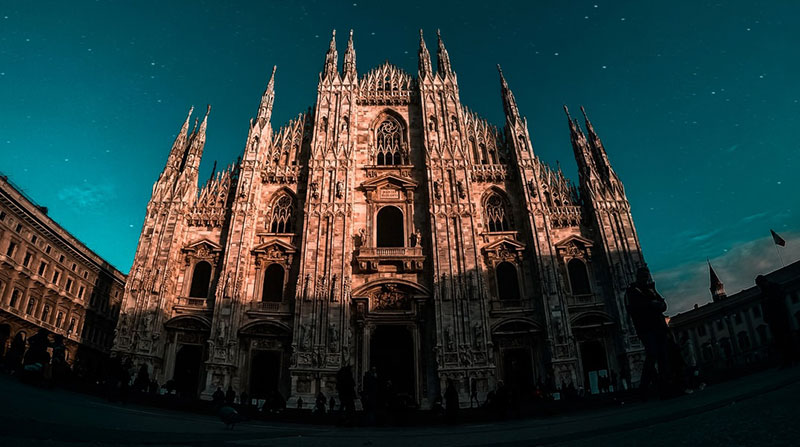Advertisement
After Antiquity, architecture, i.e., the art of designing and constructing buildings, has always been closely related to art history. This is because of the three main reasons. Firstly, the work of the public, including religious buildings were made keeping in mind aesthetics and functionality. Thus, they not only inspired but also served a large group of people. It was because many artists, labor, and decorative artisans were involved in the making.
The second reason is that in multiple buildings, the interior and exterior of the architectures depicted fine art paintings, relief sculptures and frieze, stained glass art and other mosaic and metalwork. The third and last reason was that the public building construction project went hand in hand with creating visual art and other movements like the Rococo, Renaissance, Neoclassical, etc. Thus, influencing both architecture and fine arts. To learn more about architecture history, keep reading.
Top ten influential architecture periods in history
Below here is a brief insight into the ten most influential architecture periods in history:
Classic Architecture (7th- 4th Century BC)
Greece and Rome predominantly used this architectural style between the 7th to 4th Centuries. The awe factor about this architecture style is the perfect symmetry, proportion, order and perspective surrounded by Ionic, Doric and Corinthian in a classical order. Moreover, the architectures preferred using concrete, marble, classic motifs, etc., during the period. The most remarkable construction during the period is the Parthenon- a Greek temple built for Athena.
Romanesque Architecture (1050-1170 AD)
Romanesque Architecture was an architectural style famous in Medieval Europe. It was characterized by narrow windows, heavy and thick piers, semi-circular arches, stained glass and towers. But what marks it as a special architectural period is the introduction of the vaulted roof to replace firewood roofs and its unprecedented massive scale. Some notable examples of these architectures are Hildesheim, St. Michael’s Church, etc.
Gothic Architecture (1100-1450 AD)
Gothic Architecture in the older times was also called Opus Francigenum or French Work as the Late Middle Ages introduced it in France. It was influenced by Romanesque Architecture with the uniqueness of pointed arches, flying buttresses and high vaulted ceilings. Moreover, the interiors were decorated with colorful tapestries, stained glass windows, roofs and trestle tables. One of the most outstanding examples of French Gothic architecture is Notre Dame in Paris.
Renaissance Architecture (1400-1600 AD)
It emerged in the early 15th century after being influenced by Greek and Roman ideals. Their style was characterized by perfection of symmetry, proportion, formal landscaped gardens, vaulted ceilings and stone flooring. The father of this architectural style is Filippo Brunelleschi, who constructed Florence Cathedral.
Baroque Architecture (1600-1755 AD)
This architectural style has been more complex, detailed, ornamented and elaborate. The characteristics that defined Baroque Architecture were the complex manipulation of texture, color, light and perspective. Also, the sculptures featured domes, ostentatious facades, columns, etc. One remarkable example of the Baroque style is the Palace of Versailles in France.
NeoClassical Architecture (1750-1920 AD)
NeoClassical Architecture did not appear overnight. It co-existed with the Baroque. This period is characterized by monumental structures, decorated and supported by Ionic, Doric and Corinthian pillars. Further, it was topped by classical Renaissance domes, triangular pediments and balustraded balconies. It was an influential style in different parts of Great Britain, the US and Europe. A well-known example of the place is the White House of Washington.
Art-deco Style (1925)
The architecture emerged as a result of the Art-deco movement. This movement represented the progress of the social and the technological sectors combined with the use of luxurious items, handcrafted elements, patterns and icons of modern designs and architecture. They were characterized by the decorative glass, stucco, aluminum, terracotta, steel and ceramics. The monument that marked the period was Champs-Elysees by Auguste Perret.
Modernism (1917-1965)
Modern architecture was introduced in the middle of the 20th century. The architecture of the era emphasized functionalism, clean structure, purified architecture, lack of ornamentations and extensive use of glass, steel and concrete. The remarkable architecture that flourished in this era is Mies Van De Rohe, Louis Sullivan, Frank Lloyd and others.
PostModernism (1950-2007)
This architecture style was more of a reaction against the modern approach that focused on reinventing historical details, familiar motifs and extravagant forms. In other words, it incorporated asymmetry, humor, complexity, decorative elements, etc. One of the outstanding monuments of this period is the Guggenheim Museum.
Parametricism (1997 and present)
The term Parametricism was coined by Patrik Schumacher, the principal architect of Zaha Hadid. It involved the usage of the latest technologies and innovations in its architecture developed using algorithmic equations. The equation helped them develop the design using tools like BIM, CAD and Fusion 360s. It covers more than aesthetics. Like it perfectly blends complexity, nature and fluidity. Some examples that do justice to this architectural style are the Guangzhou Opera House, BMW Welt by COOP HIMMELB, Galaxy SOHO by Zaha Hadid, etc.
Conclusion
These are the top ten influential art periods that we wanted to share with you to take inspiration from when carrying artwork. The architectural style mentioned under the headings has been used in famous structures around the globe.

